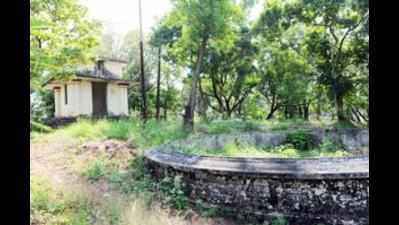- News
- City News
- jaipur News
- Jaisalmer has potential for geological parks
Trending
This story is from December 19, 2016
Jaisalmer has potential for geological parks
In a recommendation to the district administration, prof.Dhirendra Kumar Pandey, department of sociology (RU) has suggested to develop nature parks at different locations as most of the areas are protected.

An environment park will be set up soon in Nowshera belt of Jammu and Kashmir's Rajouri district, minister Mian Altaf said here today.
JAISALMER: Research teams from St. Xavier's, Mumbai, Rajasthan University (RU) and Agarkar Research Institute, Pune are on a visit to Jaisalmer's fossil belt and experts believe that the location is ideal for being developed as a geological heritage park in future.
In a recommendation to the district administration, prof. Dhirendra Kumar Pandey, department of sociology (RU) has suggested to develop nature parks at different locations as most of the areas are protected.Since 1978, Pandey has been engaged in exploring and unearthing mysteries of Jaisalmer basin.
"With areas being declared as natural parks, a regular check can be maintained on the encroachments. This will also ensure systematic development and generate revenue for the government through eco-tourism,'' the professor added.
Jaisalmer region has a rich natural wealth and therefore, Nature Park can be developed at places like Akal National Park or Akal Wood Fossils Park, Thaiat Scarp section near Thaiyat village, Khuri Road section (about 4 kms south of Jaisalmer), Fort section, Bada Bag section, Rupsi section, Bhadasar ridge-section, Nala section, north of Bhadasar ridge, Kahla village-section, Kuldhar river-section, Jajiya river-section.
Indian sub-continent was located in the southern hemisphere, south of Equator during Jurassic period.
In a recommendation to the district administration, prof. Dhirendra Kumar Pandey, department of sociology (RU) has suggested to develop nature parks at different locations as most of the areas are protected.Since 1978, Pandey has been engaged in exploring and unearthing mysteries of Jaisalmer basin.
"With areas being declared as natural parks, a regular check can be maintained on the encroachments. This will also ensure systematic development and generate revenue for the government through eco-tourism,'' the professor added.
Jaisalmer region has a rich natural wealth and therefore, Nature Park can be developed at places like Akal National Park or Akal Wood Fossils Park, Thaiat Scarp section near Thaiyat village, Khuri Road section (about 4 kms south of Jaisalmer), Fort section, Bada Bag section, Rupsi section, Bhadasar ridge-section, Nala section, north of Bhadasar ridge, Kahla village-section, Kuldhar river-section, Jajiya river-section.
"Jaisalmer basin is a classical sedimentary basin in Jurassic sediments and fossils of the southern margin of the Tethys Sea. It attracts geoscientists and general tourists from all over the world for its unique geological and cultural heritage,'' he explained. "We have the opportunity to explore evolution of life, establish changes in paleo-environmental parameters, such as water energy, nutrition supply, sea-level, temperature, depth, substratum, oxygen level, salinity, organic carbon content in rocks and fossils, etc,'' Pandey added
Indian sub-continent was located in the southern hemisphere, south of Equator during Jurassic period.
End of Article
FOLLOW US ON SOCIAL MEDIA










